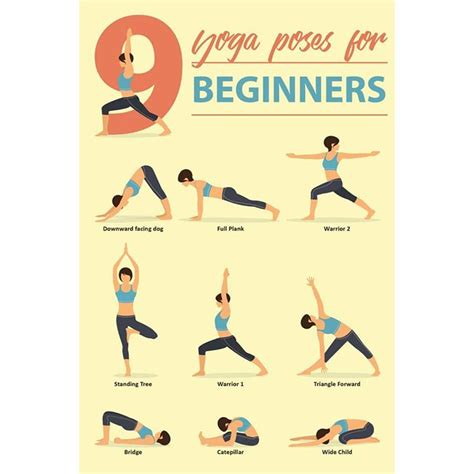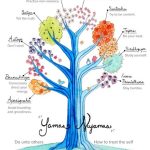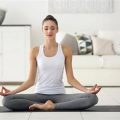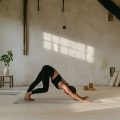Top 5 Yoga Styles Perfect for Beginners: A Comprehensive Guide
Yoga is more than just a workout; it’s a holistic practice that combines physical, mental, and spiritual elements. For beginners, diving into the world of yoga can be overwhelming, especially with the numerous styles available. Each style has its unique benefits, techniques, and philosophies. In this guide, we will explore the top five yoga types that are most suitable for beginners, offering a gentle introduction to the practice while ensuring a strong foundation for long-term progress.
Introduction
Starting yoga can be daunting, with an array of styles to choose from. Whether you seek to improve flexibility, strengthen your body, or relax your mind, there’s a yoga style tailored for you. This article introduces five beginner-friendly yoga types, breaking down what each offers and how to choose the best one for your needs. We’ll cover everything from slow-paced practices to more dynamic flows, ensuring that you find a style that resonates with your fitness level and goals.
Key Concepts
Before diving into specific styles, let’s define a few core principles common to all yoga practices:
- Asana: Physical postures or poses, which are central to yoga.
- Pranayama: Breathing techniques that support mental clarity and focus.
- Mindfulness: Awareness of the present moment, often cultivated through meditation.
- Alignment: Correct posture and positioning to avoid injury and enhance effectiveness.
- Flow: The transition between poses, often synchronized with breath.
With these concepts in mind, let’s explore the best beginner yoga styles.
1. Hatha Yoga: The Classic Introduction to Yoga
Hatha Yoga is often regarded as the foundation for all other yoga styles. It’s a slow-paced practice that emphasizes basic postures, deep breathing, and relaxation. The goal of Hatha yoga is to achieve balance between the body and mind through gentle movements and controlled breathing.
- Ideal for: Beginners who want a slower, more controlled introduction to yoga.
- Focus: Basic postures (asanas) and breathing techniques (pranayama).
- Benefits: Increases flexibility, improves balance, reduces stress.
Example Sequence:
- Mountain Pose (Tadasana)
- Forward Fold (Uttanasana)
- Cat-Cow Stretch (Marjaryasana/Bitilasana)
- Child’s Pose (Balasana)
2. Vinyasa Yoga: Dynamic and Flowing
Vinyasa Yoga involves linking breath with movement in a continuous flow. It’s a more dynamic practice than Hatha, often referred to as “flow yoga” because of the seamless transition between poses. Vinyasa is great for beginners who want a more active practice and enjoy movement.
- Ideal for: Those looking for a more dynamic, physically engaging experience.
- Focus: Breath-to-movement coordination and fluid transitions between poses.
- Benefits: Builds strength, improves flexibility, enhances coordination.
Example Sequence:
- Plank Pose (Phalakasana)
- Chaturanga Dandasana (Four-Limbed Staff Pose)
- Upward-Facing Dog (Urdhva Mukha Svanasana)
- Downward-Facing Dog (Adho Mukha Svanasana)
3. Iyengar Yoga: Precision and Alignment Focused
Iyengar Yoga is a form of Hatha yoga that focuses on precise alignment and holds in poses. Props such as blocks, belts, and cushions are used to support postures, making it accessible to all body types and fitness levels. Iyengar is ideal for beginners who need extra support or want to focus on form.
- Ideal for: Beginners who want to focus on correct alignment and those who prefer a slower, more methodical approach.
- Focus: Precision in postures and use of props for alignment support.
- Benefits: Enhances body awareness, improves posture, prevents injury.
Example Sequence:
- Triangle Pose (Trikonasana)
- Bridge Pose (Setu Bandhasana)
- Seated Forward Bend (Paschimottanasana)
- Supported Shoulder Stand (Salamba Sarvangasana)
4. Yin Yoga: Slow and Meditative
Yin Yoga is a slow, meditative practice that involves holding poses for several minutes to target deep connective tissues, such as ligaments and joints. Yin is perfect for beginners looking for a relaxing, introspective practice focused on deep stretches and mindfulness.
- Ideal for: Beginners who want a restorative and meditative practice that stretches deeply.
- Focus: Deep stretches and mindfulness, holding poses for extended periods.
- Benefits: Improves joint mobility, reduces stress, enhances relaxation.
Example Sequence:
- Butterfly Pose (Baddha Konasana)
- Sphinx Pose (Salamba Bhujangasana)
- Dragon Pose (Anjaneyasana)
- Reclining Twist (Supta Matsyendrasana)
5. Restorative Yoga: Deep Relaxation and Stress Relief
Restorative Yoga is a deeply relaxing style that uses props to support the body in restful poses. Each pose is held for several minutes, allowing the body to release tension and fully relax. This practice is ideal for beginners seeking stress relief, recovery, or a gentler approach to yoga.
- Ideal for: Beginners looking for relaxation, stress relief, or recovery from physical strain.
- Focus: Relaxation through supported poses and deep breathing.
- Benefits: Reduces stress, promotes deep relaxation, restores the body.
Example Sequence:
- Supported Child’s Pose (Salamba Balasana)
- Reclining Bound Angle Pose (Supta Baddha Konasana)
- Legs-Up-the-Wall Pose (Viparita Karani)
- Corpse Pose (Savasana)
Historical Context
Yoga’s roots date back over 5,000 years in India, where it was practiced as a spiritual discipline for attaining higher states of consciousness. Over centuries, it evolved into various forms, blending physical postures with breath control and meditation. Modern yoga began gaining traction in the West in the 20th century, with pioneers like Tirumalai Krishnamacharya and B.K.S. Iyengar shaping popular forms of yoga we practice today, including Hatha and Iyengar Yoga.
Current State Analysis
In recent decades, yoga has exploded in popularity across the globe. Today, it’s practiced by millions as a form of physical fitness, stress relief, and mindfulness. The diversity of yoga styles allows practitioners to tailor their experience to their goals, whether they’re seeking flexibility, strength, or inner peace. However, the rise of fast-paced practices like Vinyasa has also led to an increasing need for beginners to carefully choose their style to avoid injury and burnout.
Practical Applications
Yoga’s benefits are far-reaching, impacting physical health, mental well-being, and emotional resilience. It improves flexibility, balance, and muscle strength while reducing stress and promoting mindfulness. For beginners, choosing the right yoga style ensures a sustainable practice that aligns with personal goals. For example:
- Want to improve flexibility? Try Yin or Hatha Yoga.
- Looking to build strength? Opt for Vinyasa or Iyengar Yoga.
- Need relaxation and stress relief? Restorative or Yin Yoga will be ideal.
Case Studies
| Individual | Goal | Yoga Style | Outcome |
|---|---|---|---|
| Maria (35, Office Worker) | Reduce stress and improve flexibility | Yin Yoga | Significant reduction in stress and improved joint mobility |
| John (40, Athlete) | Enhance strength and flexibility | Vinyasa Yoga | Improved performance and muscle balance |
| Sophia (28, Teacher) | Recover from injury | Restorative Yoga | Faster recovery and reduced muscle tension |
Stakeholder Analysis
The rise in yoga’s popularity has created a multi-faceted ecosystem of stakeholders, including:
- Yoga Studios: Offer classes catering to different levels and preferences.
- Health Professionals: Recommend yoga for its mental and physical health benefits.
- Tech Companies: Develop apps and platforms that make yoga accessible from home.
- Yoga Teachers: Play a critical role in guiding beginners and ensuring safe practice.
Implementation Guidelines
If you’re a beginner, here’s how you can start your yoga practice:
- Choose a Style: Pick a beginner-friendly yoga type from this list that aligns with your goals.
- Find a Qualified Instructor: If possible, attend classes with certified teachers to avoid injury.
- Start Slow: Don’t rush through poses; focus on learning proper alignment and breathing.
- Use Props: Don’t hesitate to use props like blocks and straps for better alignment, especially in Iyengar Yoga.
- Practice Regularly: Consistency is key to progress.
Ethical Considerations
While yoga is highly beneficial, it’s important to address ethical concerns, such as:
- Cultural Appropriation: As yoga grows globally, practitioners must respect its roots in Indian culture.
- Inclusive Access: Yoga should be accessible to individuals of all body types, backgrounds, and abilities.
- Instructor Qualifications: Not all yoga instructors are certified, so it’s important to ensure safe and knowledgeable teaching.
Limitations and Future Research
Though yoga is widely accessible, more research is needed on how it affects specific populations (e.g., people with disabilities or chronic pain). Additionally, while yoga’s mental health benefits are well-documented, further studies on its long-term impact on mood disorders and anxiety would deepen understanding. The future may also see more integration of technology and AI to personalize yoga practices at home, making it even more accessible to diverse groups.
Expert Commentary
Yoga is a versatile practice, and while many styles are suitable for beginners, the key is to find one that aligns with personal goals and abilities. Each style offers a unique approach, whether it’s the precision of Iyengar or the relaxation of Restorative Yoga. Starting with a strong foundation in any of these beginner-friendly styles can lead to a lifelong practice that evolves with you.








